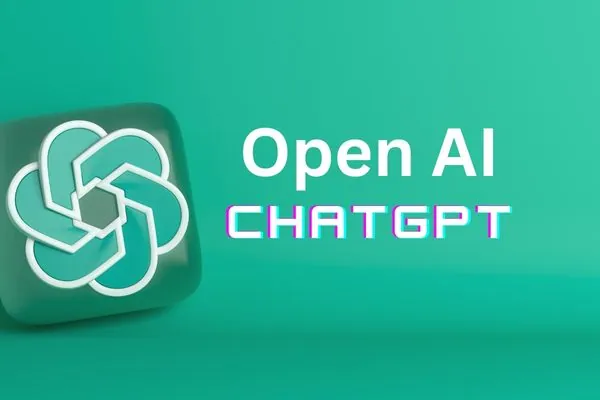ChatGPT A Game Changing AI Technology

In recent years, the field of natural language processing (NLP) has experienced rapid advancements, and ChatGPT, developed by OpenAI, stands out as one of the most remarkable breakthroughs. In this article, we will explore what Chat GPT is, its advantages, and its potential drawbacks.
What is ChatGPT?
ChatGPT is a transformer-based language model that has been fine-tuned on conversational text to generate human-like responses to prompts. The model has been pre-trained on a large corpus of text data, enabling it to understand the context and generate appropriate responses in a conversational setting.
Advantages of ChatGPT
Human-Like Text Generation: Chat GPT’s fine-tuning of conversational text enables it to generate text that is almost indistinguishable from that written by a human.
Versatility: Chat GPT can be used for a variety of NLP tasks, including question answering, text generation, and conversation, making it a highly versatile tool.
Contextual Awareness: Chat GPT has been fine-tuned on a massive amount of text data, enabling it to have a strong understanding of context and generate appropriate responses in a conversational setting.
Large-Scale Processing: Chat GPT can process large amounts of text data, making it suitable for use in real-world applications that require large-scale NLP processing.
Drawbacks of ChatGPT
Cost: As a cutting-edge NLP model, Chat GPT can be expensive to implement and may require a significant investment.
Complexity: The inner workings of Chat GPT can be complex, requiring a certain level of technical expertise to utilize it effectively.
Bias: Like all machine learning models, Chat GPT is only as unbiased as the data it was trained on. This means that it may exhibit biases and produce inappropriate responses in certain scenarios.
How to Use ChatGPT
ChatGPT, developed by OpenAI, is a transformer-based language model that has been fine-tuned on conversational text to generate human-like responses to prompts. The model’s versatility and ability to understand context make it a valuable tool across a range of fields. In this article, we will explore some of the ways Chat GPT can be used.
Customer Service: Chat GPT can be used to develop chatbots that can engage with customers and answer their questions, providing quick and personalized support.
Content Creation: Chat GPT can be used to generate high-quality content, such as blog posts, product descriptions, and even news articles, saving time and effort in the content creation process.
Education: Chat GPT can be used to create virtual tutors that can answer students’ questions and provide personalized support and feedback.
Healthcare: Chat GPT can be used to develop conversational agents that can help patients manage their health, such as by answering questions about symptoms and providing recommendations for self-care.
Finance: Chat GPT can be used to develop virtual financial advisors that can answer customer questions and provide personalized financial advice.
E-commerce: Chat GPT can be used to develop conversational shopping assistants that can help customers find products, compare prices, and make purchases, providing a personalized and seamless shopping experience.
Entertainment: Chat GPT can be used to develop virtual entertainment assistants that can answer questions about movies, TV shows, and other forms of entertainment, providing a personalized and informative experience for users.
Chat GPT can be used to enhance your SEO efforts in several ways, including:
Chatbots: Chat GPT can be used to develop conversational chatbots that can answer questions and engage with users, providing a more personalized and human-like experience for users.
Text Generation: Chat GPT can be used to generate high-quality content, such as blog posts and product descriptions, saving time and effort in the content creation process.
Keyword Generation: Chat GPT can be used to generate keywords and phrases that are relevant to your target audience, helping you to optimize your content for search engines.
Applications of ChatGPT
ChatGPT has a wide range of potential applications, some of which include:
Chatbots: ChatGPT can be used to develop conversational chatbots that can answer questions, provide information, and engage in conversations with users.
Text Generation: ChatGPT can be used to generate text, such as poetry, news articles, and even entire books.
Question Answering: ChatGPT can be used to answer questions, such as those in a trivia game, providing users with quick and accurate answers.
Language Translation: ChatGPT can be used to translate text from one language to another, making it a useful tool for international communication.
The Core Values of ChatGPT:
Natural Language Processing: ChatGPT is built on the foundation of natural language processing, leveraging the latest research and techniques in the field to generate human-like responses.
Contextual Awareness: ChatGPT has been fine-tuned on a massive amount of text data, allowing it to understand the context and generate appropriate responses in a conversational setting.
Human-Like Text Generation: ChatGPT is designed to generate text that is almost indistinguishable from that written by a human, providing a natural and seamless experience for users.
Versatility: ChatGPT can be used for a variety of NLP tasks, including question answering, text generation, and conversation, making it a highly versatile tool.
Speed and Efficiency: ChatGPT can process large amounts of text data quickly and efficiently, making it suitable for real-world applications that require large-scale NLP processing.
Continuous Improvement: OpenAI is committed to continually improving ChatGPT, leveraging the latest research and techniques in the field to enhance its performance and capabilities.
Transparency and Bias Mitigation: OpenAI is committed to transparency and bias mitigation in its models, including ChatGPT, to ensure that they are fair and ethical.
A Look at Its Creation and Creators
ChatGPT is a transformer-based language model developed by OpenAI, a leading research institute in the field of artificial intelligence. The model is fine-tuned on conversational text, allowing it to generate human-like responses to prompts.
OpenAI was founded in 2015 by Elon Musk, Sam Altman, Greg Brockman, Ilya Sutskever, John Schulman, and Wojciech Zaremba with the goal of advancing AI in a responsible and safe manner to benefit humanity as a whole. Since then, the institute has become a leader in the field of AI research, developing cutting-edge technologies and techniques that are shaping the future of AI.
ChatGPT is part of OpenAI’s GPT series of models, which includes GPT-3, one of the largest and most powerful language models to date. GPT-3 and ChatGPT have received widespread recognition for their ability to generate human-like text, making them valuable tools for a wide range of NLP applications.
The Future of ChatGPT: Trends and Possibilities
Improved Accuracy and Responsiveness: The accuracy and responsiveness of ChatGPT and other NLP models are likely to continue to improve as AI researchers develop new techniques and models that can better understand and generate text.
Wider Adoption in Business and Industry: As businesses and industries continue to recognize the value of NLP models, ChatGPT and other models are likely to be adopted more widely, allowing for the automation of many tasks that previously required human intervention.
Increased Use in Customer Service: ChatGPT and other NLP models are likely to play an increasingly important role in customer service, providing quick and personalized support to customers in real-time.
Integration with Emerging Technologies: ChatGPT and other NLP models are likely to be integrated with emerging technologies, such as virtual reality and the Internet of Things, to provide new and innovative experiences for users.
Growing Demand for Ethics and Transparency: As AI continues to gain prominence, there is a growing demand for ethical and transparent models, and ChatGPT and other NLP models are likely to be subject to increased scrutiny to ensure that they are fair and unbiased.
Other AI Models Similar to ChatGPT
GPT-3: GPT-3 is the largest and most powerful language model to date, developed by OpenAI. Like ChatGPT, GPT-3 is a transformer-based model that has been fine-tuned on large amounts of text data, making it capable of generating human-like text.
BERT: BERT is a transformer-based language model developed by Google that is designed to understand the relationships between words in a sentence. Unlike ChatGPT, BERT is not fine-tuned on conversational text, making it better suited for tasks such as sentiment analysis and text classification.
ELMo: ELMo is a deep learning model developed by AllenNLP that is capable of generating text representations for words that are context-sensitive. ELMo can be used for a wide range of NLP tasks, including text classification, sequence labeling, and machine translation.
RoBERTa: RoBERTa is a transformer-based language model developed by Facebook that is based on BERT but with several modifications designed to improve performance. RoBERTa is designed to perform well on a wide range of NLP tasks, including text classification and named entity recognition.
ALBERT: ALBERT is a transformer-based language model developed by Google that is designed to be lighter and faster than BERT while still maintaining strong performance on NLP tasks.
In conclusion, ChatGPT is a powerful NLP model with numerous advantages, including human-like text generation, versatility, and contextual awareness. However, it also has some drawbacks, including cost and complexity, and may exhibit biases. By utilizing ChatGPT in your SEO efforts, you can save time and effort in content creation, personalize the user experience, and optimize your content for search engines.




